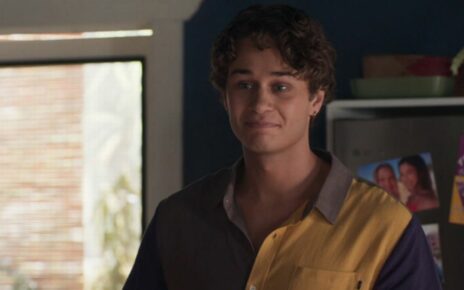With the delicacy of a bee probing a flower for pollen, Basque director Estibaliz Urresola Solaguren picks her way through the tensions and dilemmas within a family where the youngest member, an 8-year-old boy called Aitor, is feeling his way toward a new identity as a girl. Sofia Otero, who deservedly won the Silver Bear for a lead performer at the Berlinale’s award night Saturday, shows an instinctive, unforced and generous understanding of how difficult her character’s life must be. As Coco – the between-stools nickname the family has devised to avoid anything too specifically gendered – Otero is alternately obstinate, tearful, mischievous and withdrawn. She craves her mother’s comprehension but pushes her away when she tries to talk to her about why she doesn’t want to go to school.
Related Story
Berlin Film Festival Winners: French Documentary ‘On The Adamant’ By Nicolas Philibert Wins Golden Bear
Coco’s mother Ane (Patricia López Arnaiz) is a sculptor, never happier than when she is in the workshop where her father cast used metal figures for the religious icon market, wearing his stained overalls and a welding mask, cracking plaster moulds or carving beeswax models like the ones her father made for budget customers. Family chat reveals that she went to art school and has now applied for a teaching post that will mean she spends a deal more time with the beloved tools she has inherited. There is no boy or girl stuff, she tells Coco. You can do or be what you want. It’s fine for a boy to wear a mermaid’s tail, no matter what Grandma – her mother Lita (Itziar Lazkano), who ran her husband’s business while turning a blind eye to whatever he did with his models – may think. Coco isn’t looking for an infinity of options, however; on the contrary, she yearns to define herself. “How come you know who you are and I don’t?” she asks her older brother Eneke, a straight-up-and-down boy who is instinctively on his dad’s team.
Coco’s turmoil comes into focus when Ane takes her three children back to the village in the Spanish Basque country where she grew up, where her father worked and where most of her family still lives. They are an abrasively intimate, inquisitive clan, quick to judge. Lita intuits almost immediately that Ane’s marriage is fraying and keeps returning to the subject, determined to nut it out of her. Her sister Leire senses that money is short and insists on buying Ane and the children outfits to wear to a family baptism. Will this be the moment Coco wears a frock in public? Nobody discusses that directly either, but their anxiety spills over into a confrontation when Coco strokes the dresses in a designer shop and leaves marks on them.
Only her great-aunt Lourdes (Ane Gabarain), a heavy-set woman in gumboots who has devoted her life to looking after her bees, seems at ease with Coco’s evolving self. Coco is at ease with her, too. When she is around the hives on the hillside, watching Lourdes smoke out the bees or clean the hives, she slips into referring to herself as a girl quite comfortably. In this bucolic place with its mists and buzzing insects, unchanged for probably hundreds of years, she makes a new friend in Nike, a girl about her age. They swim in the river, far from the teasing crowds at the local pool; they even swap swimming costumes. When Nike looks down as Coco’s trunks come off, she doesn’t turn a hair at what she sees. “There’s a boy in my class with a fanny,” she says, matter-of-factly. “It’s cute.” It is with Nike that Coco first confides what she now feels is her real name, Lucia. The name is taken from a statue in church of St Lucia of Syracuse, who – so the devout granny Lita tells her – “was punished for standing up for what she believed in.”
The beauty of this film is that Solaguren never tries to inflate Lucia’s confusion or discomfort with her mismatched body – at one point, she complains her toes are ugly – into a banner issue. She can’t put a name to what she is experiencing: she’s only 8. Nobody here is going to bang on about gender dysphoria. They just need to learn to live with the situation as each day unfolds, an acceptance that comes much more readily to the children than the adults who worry over them, meaning well. Gina Ferrer Garcia’s hand-held camera bustles between the characters, often uncomfortably close to their faces, creating a claustrophobic sense of togetherness offset by the serene fields and river glades, the rugged profile of the nearby Pyrenees looming in the middle distance, where Lourdes carries on her solitary bee-keeping. Nature has taught her all she needs to know. Her grandfather said that there were 20,000 species of bees, she tells the child she already recognizes as a girl. “And all of them are good.”
Must Read Stories
‘Everything Everywhere’, ‘White Lotus’, ‘Abbott’ Lead; Winners, Red Carpet & More

L.A.’s Radford Studio Center Set For $1B Expansion With 20-25 New Soundstages

‘Quantumania’ Worst Drop For MCU Title; ‘Cocaine Bear’ Release Analysis

Helen Mirren On Working With Harrison Ford, Why You Won’t See Her On A Horse & More: Q&A

Read More About:
Source: Read Full Article


